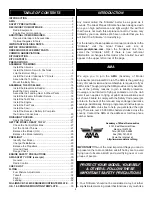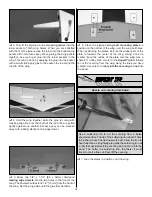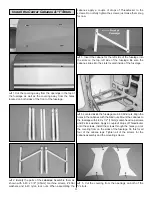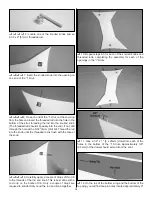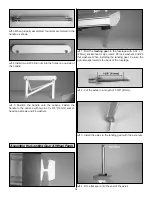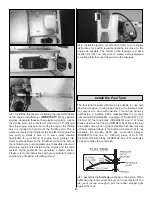
❏ ❏ ❏ ❏
7. Thread a 4-40 nut onto a 4-40 x 5-3/4" [146mm]
threaded rod approximately twenty turns. Slide a silicone clevis
retainer onto a threaded 4-40 metal clevis. Then, thread the
clevis onto the rod, tightening it against the nut. Install the
clevis onto the nylon control horn. Install an unthreaded clevis
onto the servo arm. Center the aileron and then mark the
threaded rod where it should be cut to fit the clevis. Remove all
of the pushrod components from the servo and control horn.
Read the
Expert Tip that follows and then silver solder the
clevis to the pushrod.
❏ ❏ ❏ ❏
8. After the rod has cooled, install a clevis
retainer onto the clevis you have just soldered. Then, install
the pushrod onto the aileron and servo.
❏
9. Repeat steps 1-8 for the left wing panel. Repeat steps
1-8 for the top wing panels. Note: When cutting the covering
from the hole in the top wing for the servo lead, the hole is
located on the bottom-middle of the wing.
❏
1. Epoxy a 3/16" x 1" [4.8 x 25mm] hardwood dowel into
the root rib of the bottom right wing panel. (Note: The
bottom wing can be identified by the set back at the wing
center-section). The dowel should extend 1/2" [13mm] into
the hole in the wing.
Join the Bottom Wing
How to solder
A. Use denatured alcohol or other solvent to thoroughly
clean the pushrod. Use coarse sandpaper to roughen the
end of the pushrod where it is to be soldered.
B. Apply a few drops of soldering flux to the end of the
pushrod. Then, use a soldering iron or a torch to heat it.
Tin the heated area with silver solder (GPMR8070) by
applying the solder to the end. The heat of the pushrod
should melt the solder–not the flame of the torch or
soldering iron–thus allowing the solder to flow. The end of
the wire should be coated with solder all the way around.
C. Place the clevis on the end of the pushrod. Add another
drop of flux. Then, simultaneously heat the clevis and
pushrod. Slide the clevis the rest of the way onto the
pushrod as the solder melts. Apply another small amount
of solder while the pushrod and clevis are still hot. The
same as before, the heat of the parts being soldered
should melt the solder, thus allowing it to flow. Allow the
joint to cool naturally without disturbing. Avoid excess
blobs, but make certain the joint is thoroughly soldered.
The solder should be shiny, not rough. If necessary,
reheat the joint and allow to cool.
D. Immediately after the solder has solidified, but while it
is still hot, carefully use a cloth to quickly wipe off the flux
before it hardens. Important: After the joint cools, coat
with oil to prevent rust. Note: Do not use the acid flux that
comes with silver solder for electrical soldering.
9


